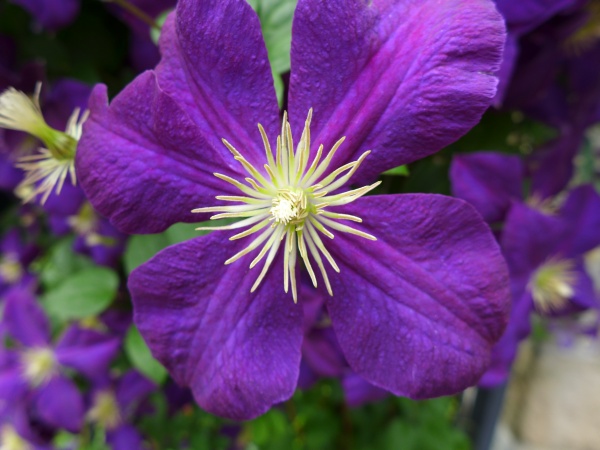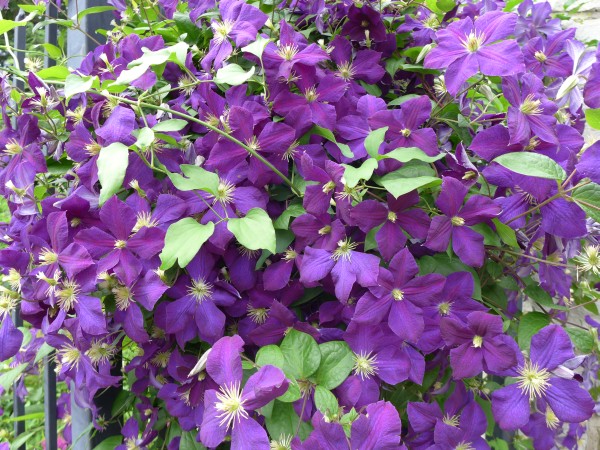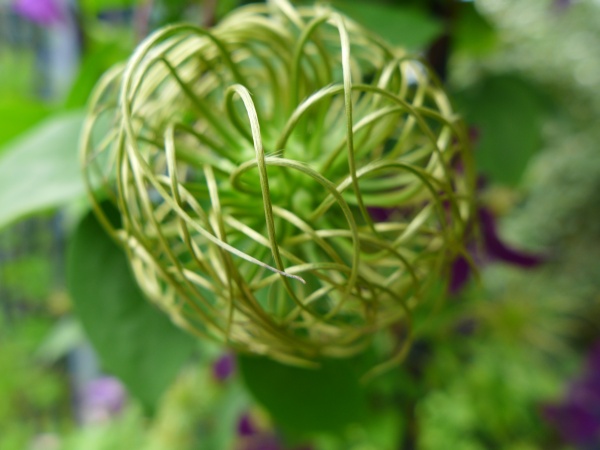
I don’t usually write about cultivated flowers but these caught my eye at Phipps Conservatory’s Outdoor Garden.
A Google Image search matched my photo to Clematis jackmanii, a cultivar introduced in 1862 by George Jackman. Phipps Conservatory was built in 1893 so the plant and the building would be close contemporaries.
The vine is thick with 5-7″ deep purple flowers.

It also has these unusual swirling structures. Do you know what they are?

(photos by Kate St. John)
p.s. If I’ve misidentified the vine, please let me know!
marvelous swirly things are the center of the flower which is the seed pod. don’t know about the name. Thanks Kate for showing us all those marvels of nature!
It certainly looks like mine, and I have jackmanii. This seems like a particularly good year for it.
Forgot to add…We have a beautiful native clematis which blooms in late summer: Clematis virginiana. I think, in beauty, it rivals the invasive “Sweet Autumn” (C. terniflora), which is native to China and Japan and has become a problem, particularly in the eastern half of the United States.
Are they called achenes?
Janet, good question about achenes. Google says “Achenes are monocarpellate (formed from one carpel) and indehiscent (they do not open at maturity).” I’ll have to watch the plant to see if the seed opens at maturity. I seem to remember that Virgin’s Bower, a native Clematis, does not.
Carol Smith, thank you for reminding me that Virgin’s Bower is in the Clematis genus (how could I have forgotten!!). Now that you mention it I remember that the seed pods of Virgin’s Bower (Clematis virginiana) are quite similar though feathery. Here are two blog posts about the plant in summer (http://www.birdsoutsidemywindow.org/2012/08/19/virgins-bower-2/) and in winter (http://www.birdsoutsidemywindow.org/2010/12/08/winter-weeds-virgins-bower/). I can’t believe I didn’t make that connection on my own!
I thought the seed was attached to the base of each swirly thing, which gets fluffier when its ready to catch the wind and carry the seed. At least on the Clematis cultivars that I am familiar with.